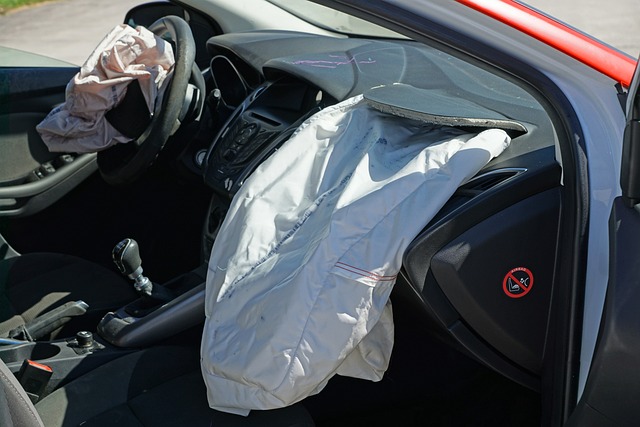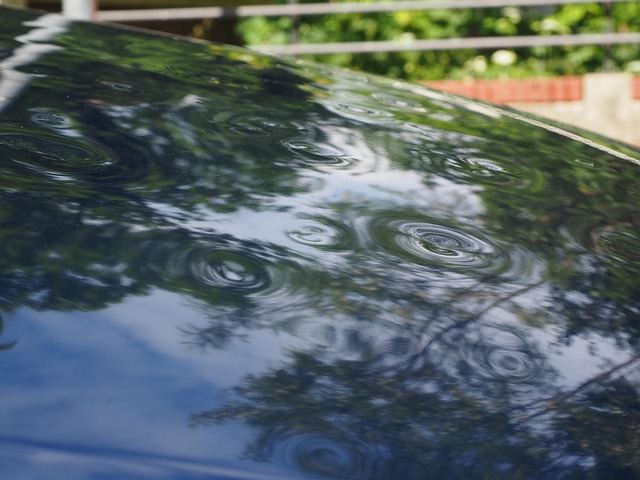Comprehensive insurance provides vehicle owners with a robust safety net, covering a wide range of risks beyond standard liability policies. It offers peace of mind and financial protection against unforeseen events such as theft, vandalism, natural disasters, and accidental damage. This type of coverage allows for flexibility in repair choices and ensures fair compensation in case of total loss. While comprehensive insurance has limitations, understanding its exclusions is crucial to ensuring adequate protection tailored to individual needs. It's essential to compare policies, evaluate different coverages, and select a provider with efficient claims processes. By following the correct claims procedure and adopting strategic measures like regular vehicle maintenance and safe driving habits, drivers can maximize the benefits of comprehensive insurance, offering holistic protection for their vehicles in an unpredictable world.
“Comprehensive car protection is an essential consideration for any vehicle owner, offering peace of mind and robust coverage. This article delves into the intricacies of comprehensive insurance, exploring what it entails and how it can safeguard your investment. We’ll guide you through its benefits, from protecting against unexpected damages to specific vehicle types.
Learn about potential exclusions, choosing the right policy, filing claims, and tips to maximize coverage. By understanding comprehensive insurance, you can make informed decisions to ensure your vehicle’s long-term protection.”
Understanding Comprehensive Insurance: What It Covers

Comprehensive insurance, also known as ‘full coverage’, is a type of automotive policy that provides extensive protection for vehicle owners. Unlike liability-only insurance, which typically covers damages caused to others in an accident, comprehensive insurance goes above and beyond by insuring against various risks your vehicle might encounter. This includes damage from natural disasters like floods, earthquakes, or severe weather conditions, as well as theft, vandalism, and even accidental damage.
When you have comprehensive insurance, rest assured that your car is protected if it gets damaged or stolen during unexpected events. This type of coverage can repair or replace your vehicle, offering peace of mind knowing you’re not financially burdened by unforeseen circumstances. It’s a valuable option for drivers who want to ensure their investment in their car is safeguarded against potential perils.
Benefits of Comprehensive Car Protection

Comprehensive car protection, often provided through comprehensive insurance policies, offers a suite of benefits that go beyond the standard coverage required by law. This type of insurance is designed to shield vehicle owners from financial burdens associated with unexpected events such as theft, vandalism, natural disasters, and even accidental damage. One of the key advantages is peace of mind; knowing that your investment in your vehicle is secure can significantly reduce stress, especially during challenging times like severe weather or high crime areas.
Additionally, comprehensive insurance typically covers repairs or replacements at a choice of repair facilities, giving you flexibility in selecting where you get your car serviced. This feature ensures you’re not limited to the dealership’s repair center, allowing for more options and potentially better rates. Moreover, should your vehicle be declared a total loss, comprehensive insurance pays out based on the actual cash value of the car at the time of the incident, ensuring you receive fair compensation rather than a depreciated value offered by a partial coverage policy.
Common Exclusions and Limitations

Comprehensive car protection, often offered as part of a comprehensive insurance policy, provides broad coverage for your vehicle against various risks and damages. However, it’s important to understand that even this extensive coverage has its exclusions and limitations. These can include damage caused by natural disasters like floods, earthquakes, or severe storms, which are typically not covered under standard comprehensive policies. Additionally, certain types of incidents such as damage resulting from war, nuclear hazards, or acts of terrorism may also be excluded.
Other common exclusions include wear and tear, mechanical failures, and routine maintenance needs. Policies usually do not cover losses caused by driving under the influence or other illegal activities. Furthermore, specific high-risk behaviors like off-road driving or modifying your vehicle without proper authorization can lead to limitations in claims. Always review your policy carefully to comprehend what is covered and what isn’t, ensuring you have the protection that aligns with your needs.
Types of Vehicles Eligible for Comprehensive Coverage

Comprehensive car protection, or comprehensive insurance, is designed to cover a wide range of potential risks and damages that your vehicle might encounter. This type of coverage goes beyond the basic liability insurance, which primarily covers accidents causing property damage or bodily injury to others. Comprehensive insurance is applicable to various types of vehicles, providing tailored protection for different needs.
Eligible vehicles typically include cars, trucks, SUVs, and even motorcycles. It’s important to note that comprehensive insurance does not usually cover vehicles used for commercial purposes, such as taxis or delivery vans. Additionally, certain high-risk vehicles, like classic cars or those with modified engine specifications, might require specific endorsements or have restrictions on their comprehensive coverage.
How to Choose the Right Policy for Your Needs

When selecting a comprehensive insurance policy, it’s crucial to assess your unique needs and circumstances. Start by understanding the different types of coverage available—such as collision, liability, and comprehensive—and determine which ones align with your vehicle and driving habits. Consider factors like your age, driving history, and the make and model of your car. For instance, if you own an older vehicle that’s less valuable, a basic liability policy might suffice. However, for newer, pricier cars, opt for a more robust comprehensive insurance plan to safeguard against potential losses.
Research various insurance providers and compare their offerings side by side. Look beyond the price tag; analyze deductibles, coverage limits, and any additional perks or discounts they provide. Read customer reviews and understand the claims process to ensure it’s efficient and straightforward. Remember, the right policy should offer peace of mind, so choose one that offers sufficient protection tailored to your requirements.
Filing a Claim: A Step-by-Step Guide

When it comes to comprehensive car protection, understanding the claims process is essential. Here’s a straightforward guide on how to file a claim with your comprehensive insurance provider:
1. Assess the Damage: The first step is to evaluate the extent of the damage to your vehicle. Comprehensive insurance typically covers incidents like theft, vandalism, natural disasters, and accidents not at fault. Take clear photos and gather evidence of the damage for future reference.
2. Contact Your Insurance Provider: Reach out to your insurance company as soon as possible. Most providers have dedicated customer service teams available 24/7. Inform them about the incident and provide details like your policy number, vehicle information, and location. They will guide you through the next steps and may ask for additional documentation or police reports, depending on the situation.
3. Report the Claim: Fill out a claim form provided by your insurance company. This can often be done online or over the phone. Ensure you have all necessary details at hand, such as dates, times, and descriptions of the incident and damage.
4. Submit Supporting Documentation: Gather and submit any required documents, including police reports (if applicable), repair estimates, and photos of the damaged vehicle. Keep copies for your records.
5. Wait for Assessment and Approval: The insurance company will assess your claim based on the information provided. They may inspect the vehicle or request additional information. Once approved, they will inform you about the next steps, including settlement options (repair, replacement, or cash payment).
Comparisons with Other Insurance Types

When considering car protection, it’s crucial to understand how comprehensive insurance stacks up against other types. Unlike liability insurance, which primarily covers damages caused to others in an accident, comprehensive insurance offers a broader spectrum of coverage. It not only shields you from financial burden due to accidents but also protects against various other risks such as theft, vandalism, natural disasters, and even mechanical failures.
In contrast with collision insurance, which specifically addresses damage to your vehicle resulting from collisions, comprehensive insurance is more inclusive. While collision insurance may leave gaps in coverage for incidents like hitting a fixed object or rolling your car, comprehensive insurance bridges these gaps. This makes it a game-changer in ensuring holistic protection for your vehicle, providing peace of mind on the road and safeguarding your investment.
Tips for Maximizing Your Comprehensive Car Protection

Maximizing your comprehensive car protection involves a few strategic steps. Firstly, review your policy details and ensure it covers all necessary aspects, including damage from natural disasters, theft, and vandalism. Comprehensive insurance is designed to protect against unexpected events, so understanding what’s covered is key. Secondly, maintain regular vehicle maintenance checks. A well-maintained car is less prone to breakdowns or accidents, which can trigger comprehensive claims. Keeping your logs of service and repairs can also help streamline the claims process should an incident occur.
Additionally, consider optional add-ons that could enhance your protection. Some policies offer perks like roadside assistance, rental car coverage, or even contingency plans for travel delays caused by vehicle issues. Lastly, drive safely and responsibly. Adhering to traffic rules and regulations not only keeps you and others safe but also reduces the likelihood of claims. Safe driving habits can save you from financial burdens and ensure your comprehensive insurance provides the intended protection.
